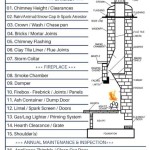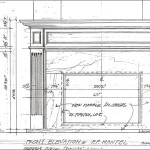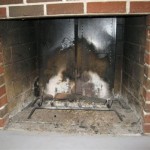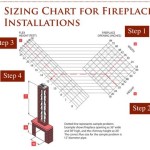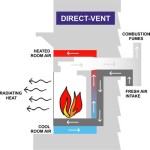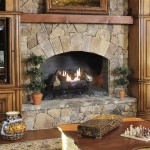Traditional Fireplace Designs: A Timeless Element of Home Décor
The fireplace has served as a central gathering point in homes for centuries, offering warmth, light, and a sense of comfort. While contemporary designs continue to evolve, traditional fireplace designs maintain their enduring appeal, evoking a sense of history and sophistication. This article explores the key features and diverse styles encompassed by traditional fireplace designs, providing insights into their enduring popularity and adaptability within modern homes.
Defining Characteristics of Traditional Fireplaces
Traditional fireplaces are characterized by specific design elements that distinguish them from modern interpretations. These elements often include ornate detailing, robust construction, and a focus on symmetry and proportion. Materials commonly associated with traditional fireplaces include brick, stone, and wood, each contributing to the overall aesthetic and thermal performance.
Mantels are a defining feature of traditional fireplaces, often crafted from carved wood, marble, or stone. These mantels serve as a focal point, providing a surface for displaying decorative items and framing the firebox. The design of the mantel can range from simple, understated elegance to elaborate, highly ornamented styles, reflecting the architectural period and personal preferences.
Fireboxes in traditional fireplaces are typically constructed from firebrick, a refractory material designed to withstand high temperatures. The firebox is the heart of the fireplace, where the fire burns and generates heat. Traditional fireboxes are often designed with a specific shape and depth to optimize combustion and heat radiation. A damper controls airflow within the chimney, regulating the draft and preventing heat loss when the fireplace is not in use.
Surrounds are the decorative elements that encase the firebox, connecting it to the mantel and the surrounding wall. These surrounds can be made from a variety of materials, including tile, stone, marble, or wood. The design of the surround often complements the mantel, creating a cohesive and visually appealing focal point within the room.
Hearth, forming the base of the fireplace, typically extends outward into the room. The hearth provides a safety buffer, protecting flooring from stray embers and sparks. It also serves as a visual anchor, grounding the fireplace within the room.
Exploring Different Styles of Traditional Fireplaces
Within the realm of traditional fireplace designs, several distinct styles have emerged throughout history, each reflecting the architectural trends and cultural influences of its time. Understanding these styles can aid in selecting a fireplace that complements the overall aesthetic of a home.
Georgian fireplaces, popular during the 18th century, are characterized by their symmetrical design, refined elegance, and use of classical architectural elements. These fireplaces often feature detailed carvings, fluted pilasters, and dentil molding. Materials commonly used in Georgian fireplaces include marble, limestone, and finely crafted wood.
Victorian fireplaces, prevalent during the reign of Queen Victoria in the 19th century, are known for their ornate detailing, elaborate embellishments, and use of rich, dark woods. These fireplaces often feature intricate carvings, decorative tiles, and cast iron inserts. The Victorian era embraced a sense of opulence and grandeur, which is reflected in the elaborate designs of its fireplaces.
Adam fireplaces, named after the Scottish architect Robert Adam, represent a neoclassical style that emphasizes symmetry, balance, and refined detailing. These fireplaces often feature delicate carvings, fluted columns, and classical motifs such as swags and garlands. Adam fireplaces are characterized by their light, airy appearance, often incorporating pastel colors and delicate ornamentation.
Arts and Crafts fireplaces, originating in the late 19th and early 20th centuries, champion simplicity, craftsmanship, and the use of natural materials. These fireplaces often feature handcrafted tiles, exposed brick or stone, and simple, unadorned mantels. The Arts and Crafts movement sought to counter the mass-produced goods of the Industrial Revolution, emphasizing handcrafted quality and a connection to nature.
French Country fireplaces evoke a sense of rustic charm, warmth, and informality. These fireplaces often feature exposed stone or brick, rough-hewn wood mantels, and simple, unadorned designs. French Country fireplaces often incorporate natural elements such as flowers, herbs, and rustic pottery, creating a cozy and inviting atmosphere. The incorporation of a large inglenook provides a feeling of protection and warmth.
Materials and Construction of Traditional Fireplaces
The selection of materials plays a crucial role in the aesthetic appeal and functional performance of a traditional fireplace. Brick, stone, marble, and wood are commonly used, each offering unique characteristics and visual qualities.
Brick provides a classic and durable option for fireplace construction. Firebrick, specifically designed to withstand high temperatures, is used for the firebox. Exterior brick can be chosen to complement the architectural style of the home. Brick fireplaces offer a sense of warmth and solidity, adding a touch of rustic charm to any room.
Stone offers a natural and timeless aesthetic. Various types of stone, such as granite, limestone, and slate, can be used to construct fireplaces. Stone fireplaces can range from rustic, with rough-hewn stones, to elegant, with polished and refined finishes. The natural variations in color and texture create a unique and visually appealing focal point.
Marble is a luxurious and elegant option for fireplace construction. Marble fireplaces are often associated with Georgian and Victorian styles, adding a touch of sophistication and grandeur to a room. Marble can be carved and polished to create intricate designs, enhancing its inherent beauty.
Wood is primarily used for mantels and surrounds in traditional fireplaces. Different types of wood, such as oak, cherry, and mahogany, can be used, each offering unique grain patterns and colors. Wood mantels can be carved and stained to complement the architectural style of the home. The use of wood adds warmth and character to the fireplace, creating a cozy and inviting atmosphere.
The construction of a traditional fireplace typically involves several stages, including the foundation, firebox, chimney, and decorative elements. A solid foundation is essential to support the weight of the fireplace. The firebox is constructed from firebrick, ensuring its ability to withstand high temperatures. The chimney provides a pathway for smoke and gases to escape. The decorative elements, such as the mantel, surround, and hearth, are added last, completing the aesthetic design.
Integrating Traditional Fireplaces into Modern Homes
While traditional fireplace designs evoke a sense of history and elegance, they can be seamlessly integrated into modern homes. By carefully considering the architectural style of the home, the existing décor, and personal preferences, it is possible to create a harmonious and visually appealing space.
One approach is to select a traditional fireplace design that complements the architectural style of the home. For example, a Georgian-style fireplace would be well-suited for a home with classical architectural features, while an Arts and Crafts-style fireplace would be a good fit for a home with a more rustic or natural aesthetic. This helps create a seamless integration of the fireplace into the existing structure.
Another approach is to incorporate traditional elements into a modern fireplace design. For example, a modern fireplace could be clad in brick or stone, incorporating elements of traditional materials. A reclaimed wood mantel can add warmth and character to a contemporary fireplace design. These subtle nods to tradition can help bridge the gap between the old and the new.
The surrounding décor can also play a role in integrating a traditional fireplace into a modern home. Choosing furniture, artwork, and accessories that complement the fireplace's style can help create a cohesive and visually appealing space. A mix of traditional and modern elements can create a sense of eclecticism and uniqueness.
Consider the scale and proportion of the fireplace in relation to the room. A large, ornate fireplace may overwhelm a small room, while a small, understated fireplace may get lost in a large room. Careful consideration of scale and proportion is essential for creating a balanced and harmonious design.
Prioritize safety and functionality. Ensure that the fireplace is properly installed and maintained, following all relevant building codes and safety regulations. A functional fireplace can provide warmth and ambiance, while a poorly installed or maintained fireplace can pose safety hazards. Regular inspections and maintenance are essential for ensuring the safe and efficient operation of the fireplace.

Fireplace Ideas 45 Modern And Traditional Designs Impressive Interior Design Home House

Fireplace Ideas 45 Modern And Traditional Designs Impressive Interior Design Living Room With

5 Fireplace Design Ideas That Will Enhance Your Home

How To Update The Look Of Your Fireplace

5 Fireplace Mantel Decorating Ideas For Your Traditional Hearth

Devonshire Traditional Fireplace Design Collection By Astria Living Room Orange County Fireplaces Houzz Ie

Stunning Traditional Fireplace Ideas To Try Direct Fireplaces

Fireplace Ideas 45 Modern And Traditional Designs Impressive Interior Design Maison Coloniale Modèles De Cheminée Idées Foyer

Fireplace Design Considerations Centsational Style

15 Traditional Fireplaces Design Ideas To Inspire Your Renovation Real Homes
Related Posts

